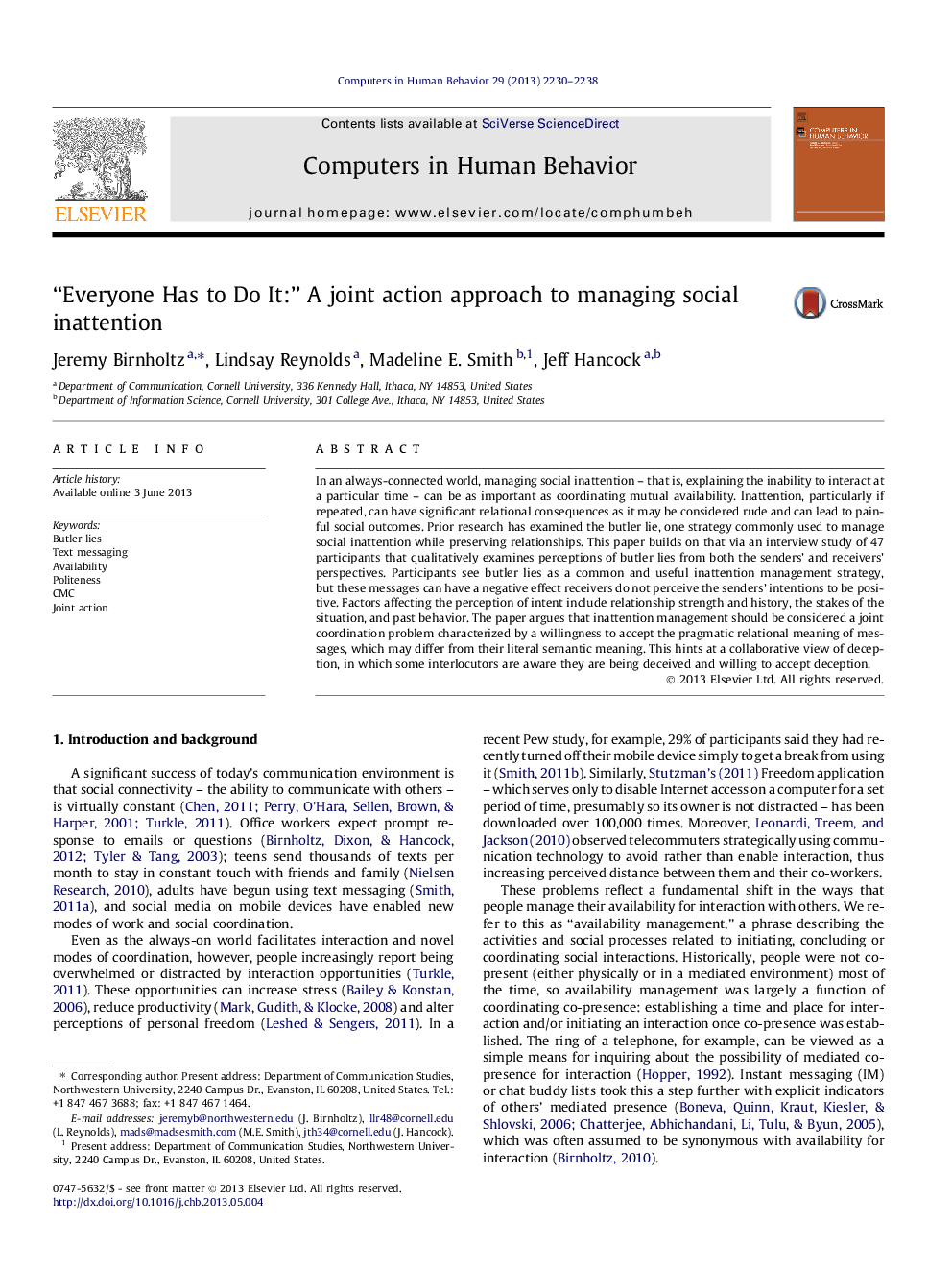| کد مقاله | کد نشریه | سال انتشار | مقاله انگلیسی | نسخه تمام متن |
|---|---|---|---|---|
| 350819 | 618458 | 2013 | 9 صفحه PDF | دانلود رایگان |

• Butler lies are not perceived negatively, as long as intent is perceived as positive.
• Perception of butler lies is influenced by relationships and history.
• A collaborative model of inattention management and deception is proposed.
In an always-connected world, managing social inattention – that is, explaining the inability to interact at a particular time – can be as important as coordinating mutual availability. Inattention, particularly if repeated, can have significant relational consequences as it may be considered rude and can lead to painful social outcomes. Prior research has examined the butler lie, one strategy commonly used to manage social inattention while preserving relationships. This paper builds on that via an interview study of 47 participants that qualitatively examines perceptions of butler lies from both the senders’ and receivers’ perspectives. Participants see butler lies as a common and useful inattention management strategy, but these messages can have a negative effect receivers do not perceive the senders’ intentions to be positive. Factors affecting the perception of intent include relationship strength and history, the stakes of the situation, and past behavior. The paper argues that inattention management should be considered a joint coordination problem characterized by a willingness to accept the pragmatic relational meaning of messages, which may differ from their literal semantic meaning. This hints at a collaborative view of deception, in which some interlocutors are aware they are being deceived and willing to accept deception.
Journal: Computers in Human Behavior - Volume 29, Issue 6, November 2013, Pages 2230–2238